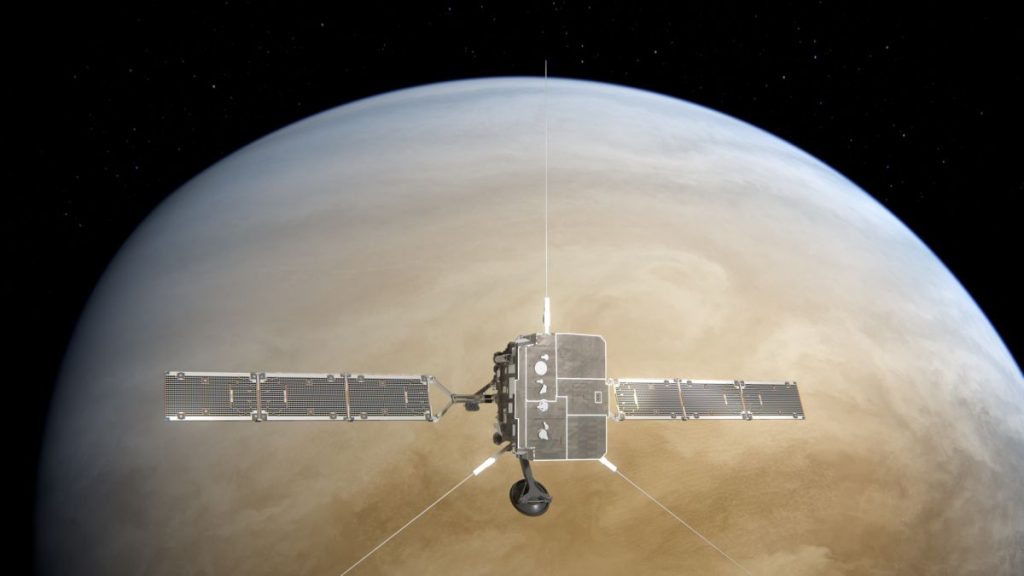The sun-exploring Solar Orbiter spacecraft came face to face with a massive eruption of plasma from the sun, just ahead of a pivotal flyby of Venus.
An enormous coronal mass ejection (CME), a burst of charged particles from the sun’s upper atmosphere, the corona, shot out from the sun on Aug. 30 in the direction of Venus. Shortly after that, the bubble of solar material reached Solar Orbiter, which was just preparing for its latest orbital flyby of the second planet of the solar system.
Fortunately, the ESA-NASA observatory is designed to measure the very kind of violent outburst it just encountered and thus could withstand the solar assault with ease.
The spacecraft carries 10 science instruments to observe the sun’s surface and collect data on CMEs, the solar wind and the sun’s magnetic field. Some of these instruments were turned off during the close approach to Venus, due to the potential risk from sunlight bouncing off the highly reflective Venusian atmosphere, ESA said in a statement.
Related: The sun as you’ve never seen it: European probe snaps closest-ever photo of our star
Solar Orbiter was, however, able to collect some valuable measurements of its environment during the CME encounter, detecting an increase in energetic solar particles. Violent solar events see particles such as protons, electrons and even ionized helium atoms hurled from the sun and accelerated to near relativistic speeds. Such particles pose a radiation risk to astronauts and can damage spacecraft. Understanding their movements and behavior in space will therefore be valuable for protecting life and technology on Earth and in space.
The spacecraft later successfully made its close approach to Venus at 01:26 GMT Sept. 4 (9:26 p.m. EDT Sept. 3).
“The close approach went exactly to plan, thanks to a great deal of planning from our colleagues in Flight Dynamics and the diligent care of the Flight Control Team,” Jose-Luis Pellon-Bailon, Solar Orbiter Operations Manager, said in the statement.
The close approach was primarily intended to allow Solar Orbiter to change its orbit to take it closer to the sun. During the flyby, however, the probe also made bonus observations of Venus’s mysterious magnetic field.
Solar Orbiter launched in 2020 and is two-and-a-half years into its decade-long mission to image the sun from the closest ever distance and study the properties of the star’s magnetic field. The spacecraft uses Venus’s gravity to alter and tilt its orbit out of the ecliptic plane, in which planets orbit. These visits to Venus will eventually enable Solar Orbiter to make the first-ever observations of the sun’s unexplored poles, which are key to driving the star’s 11-year cycle of activity, the ebb and flow in the generation of sunspots, flares and eruptions that affect space weather around Earth.
Follow us on Twitter @Spacedotcom and on Facebook.

